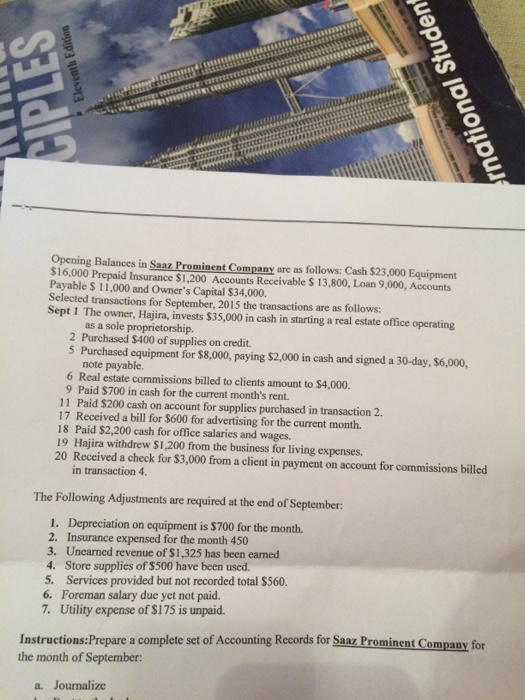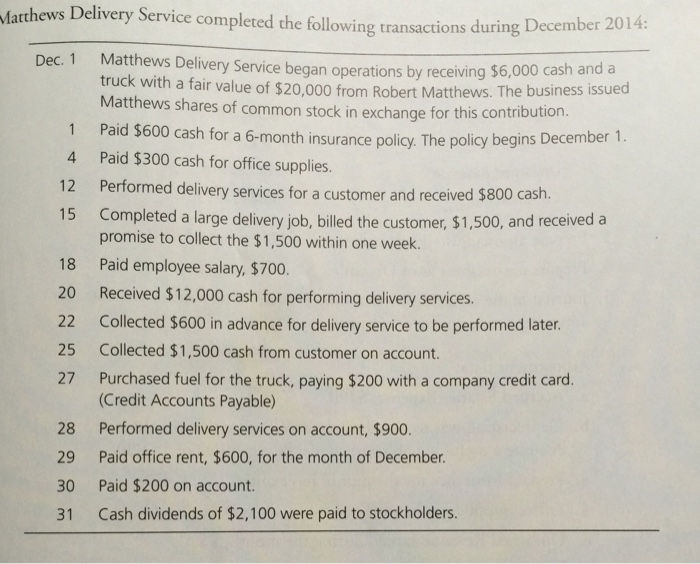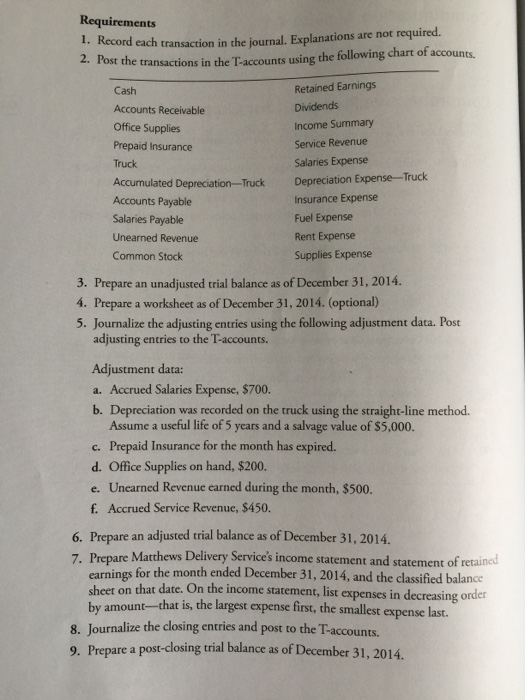Business and Management
Showing 1495–1503 of 1826 resultsSorted by latest
-
How do companies manage the flow of products and services from production to the final consumer?
$1.00How do companies manage the flow of products and services from production to the final consumer? Explain with examples.
-
Mauer Company licenses customer-relationship software to Hedges Inc….
$0.00Mauer Company licenses customer-relationship software to Hedges Inc. for 3 years. In addition to providing the software, Mauer promises to provide consulting services over the life of the license to maintain operability within Hedges� computer system. The total transaction price is $200,000. Based on standalone values, Mauer estimates the consulting services have a value of $75,000 and the software license has a value of $125,000. Upon installation of the software on July 1, 2014, Hedges pays $100,000; the contract balance is due on December 31, 2014. Identify the performance obligations and the revenue in 2014, assuming (a) the performance obligations are interdependent and (b) the performance obligations are not interdependent.
(a) If interdependent, the contract is accounted for as a single revenue amount of $  .
.(b) If not interdependent, service revenue is $  and the license revenue is $
and the license revenue is $ .
. -
Saaz Prominent Company Case Study
$5.00Text: Cash $23,000 Equipment $16,000 Prepaid Insurance $1,200 Accounts Receivable $ 13,800,1-oan 9,000, Accounts Payable $ 11,000 and Owner’s Capital $34,000. Selected transactions for September. 2015 the transactions are as follows: The owner, Hajira, invests $35,000 in cash in starting a real estate office operating as a sole proprietorship. Purchased $400 of supplies on credit. Purchased equipment for $8,000, paying $2,000 in cash and signed a 30-day, $6,000, note payable. Real estate commissions billed to clients amount to $4,000. Paid $700 in cash for the current month’s rent. Paid $200 cash on account for supplies purchased in transaction 2. Received a bill for $600 for advertising for the current month. Paid $2,200 cash for office salaries and wages. Hajira withdrew $ 1.200 from the business for living expenses. Received a check for $3,000 from a client in payment on account for commissions billed in transaction 4. The Following Adjustments are required at the end of September: Depreciation on equipment is $700 for the month. Insurance expensed for the month 450 Unearned revenue of S1,325 has been earned Store supplies of $500 have been used. Services provided but not recorded total $560. Foreman salary due yet not paid. Utility expense of $175 is unpaid. Prepare a complete set of Accounting Records for Saaz Prominent C ompany for the month of September:
-
Tyler Financial Services Case
$5.00Tyler Financial Services performs bookkeeping and tax-reporting services to startup companies in the Oconomowoc area. On January 1, 2014, Tyler entered into a 3-year service contract with Walleye Tech. Walleye promises to pay $10,500 at the beginning of each year, which at contract inception is the standalone selling price for these services. At the end of the second year, the contract is modified and the fee for the third year of services is reduced to $9,800. In addition, Walleye agrees to pay an additional $20,600 at the beginning of the third year to cover the contract for 3 additional years (i.e., 4 years remain after the modification). The extended contract services are similar to those provided in the first 2 years of the contract.
1. Prepare the journal entries for Tyler in 2014 and 2015 related to this service contract. (If no entry is required, select “No Entry” for the account titles and enter 0 for the amounts. Credit account titles are automatically indented when the amount is entered. Do not indent manually.)
Date Account Titles and Explanation Debit Credit Jan 1, 2014 Dec 31, 2014 Jan 1, 2015 Dec 31, 2015 2.
 Prepare the journal entries for Tyler in 2016 related to the modified service contract, assuming a prospective approach. (If no entry is required, select “No Entry” for the account titles and enter 0 for the amounts. Credit account titles are automatically indented when the amount is entered. Do not indent manually.)
Prepare the journal entries for Tyler in 2016 related to the modified service contract, assuming a prospective approach. (If no entry is required, select “No Entry” for the account titles and enter 0 for the amounts. Credit account titles are automatically indented when the amount is entered. Do not indent manually.)Date Account Titles and Explanation Debit Credit Jan 1, 2016 Dec 31, 206 3.
 Repeat the requirements for part (b), assuming Tyler and Walleye agree on a revised set of services (fewer bookkeeping services but more tax services) in the extended contract period and the modification results in a separate performance obligation. (If no entry is required, select “No Entry” for the account titles and enter 0 for the amounts. Credit account titles are automatically indented when the amount is entered. Do not indent manually.)
Repeat the requirements for part (b), assuming Tyler and Walleye agree on a revised set of services (fewer bookkeeping services but more tax services) in the extended contract period and the modification results in a separate performance obligation. (If no entry is required, select “No Entry” for the account titles and enter 0 for the amounts. Credit account titles are automatically indented when the amount is entered. Do not indent manually.)Date Account Titles and Explanation Debit Credit Jan 1, 2016 Dec 31, 2016 -
Matthews Delivery Service Case
$7.50Text: Matthews Delivery Service completed the following transactions during December 2014: Dec. 1 Matthews Delivery Service began operations by receiving $6,000 cash and a truck with a fair value of $20,000 from Robert Matthews. The business issued Matthews shares of common stock in exchange for this contribution. 1 Paid $600 cash for a 6-month insurance policy. The policy begins December 1. 4 Paid $300 cash for office supplies. 12 Performed delivery services for a customer and received $800 cash. 15 Completed a large delivery job, billed the customer, $1,500, and received a promise to collect the $1,500 within one week. 18 Paid employee salary, $700. 20 Received $12,000 cash for performing delivery services. 22 Collected $600 in advance for delivery service to be performed later. 25 Collected $1,500 cash from customer on account. 27 Purchased fuel for the truck, paying $200 with a company credit card. (Credit Accounts Payable) 28 Performed delivery services on account, $900. 29 Paid office rent, $600, for the month of December. 30 Paid $200 on account. 31 Cash dividends of $2,100 were paid to stockholders. Record each transaction in the Journal. Explanations are not required. Post the transactions in the T-accounts using the following chart of accounts. Prepare an unadjusted trial balance as of December 31, 2014. Prepare a worksheet as of December 31, 2014. (optional) Journalize the adjusting entries using the following adjustment data. Post adjusting entries to the T-accounts. Accrued Salaries Expense, $700. Depreciation was recorded on the truck using the straight-line method. Assume a useful life of 5 years and a salvage value of $5,000. Prepaid Insurance for the month has expired. Office Supplies on hand, $200. Unearned Revenue earned during the month, $500. Accrued Service Revenue, $450. Prepare an adjusted trial balance as of December 31, 2014. Prepare Matthews Delivery Services income statement and statement of n earnings for the month ended December 31, 2014, and the classified balance sheer on that date. On the income statement, list expenses in decreasing or by amount-that is, the largest expense first, the smallest expense last. Journalize the dosing entries and post to the T-accounts. Prepare a post-closing trial balance as of December 31, 2014.
-
Suppose that a country is experiencing a trade deficit
$1.00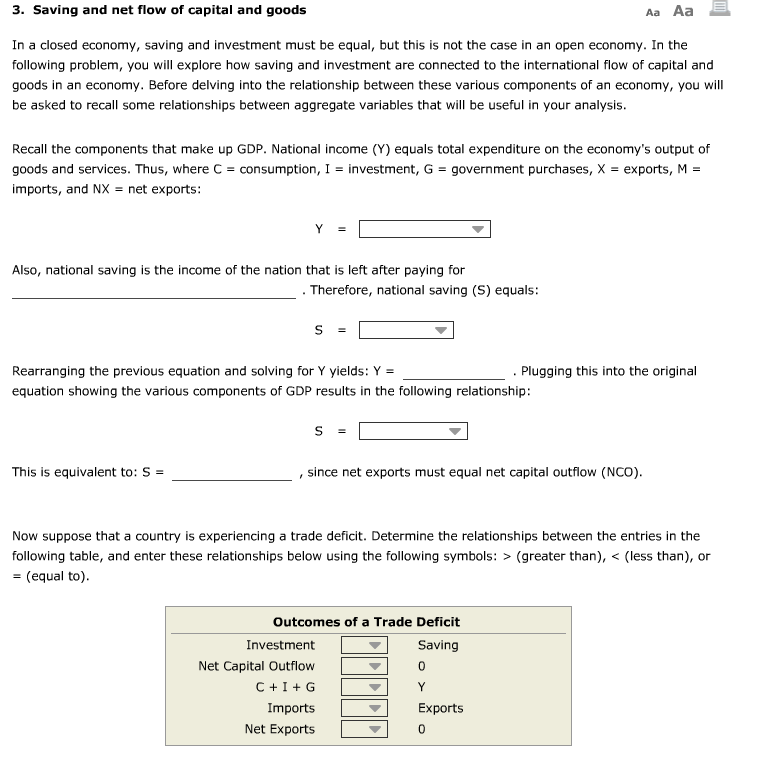
Text: In a closed economy, saving and investment must be equal, but this is not the case in an open economy. In the following problem, you will explore how saving and investment are connected to the international flow of capital and goods in an economy. Before delving into the relationship between these various components of an economy, you will be asked to recall some relationships between aggregate variables that will be useful in your analysis. Recall the components that make up GDP. National income (Y) equals total expenditure on the economy’s output of goods and services. Thus, where C = consumption, I = investment, G = government purchases, X = exports, M = imports, and NX = net exports: Also, national saving is the income of the nation that is left after paying for . Therefore, national saving (S) equals: Rearranging the previous equation and solving for Y yields: Y = . Plugging this into the original equation showing the various components of GDP results in the following relationship: This is equivalent to: S = , since net exports must equal net capital outflow (NCO). Now suppose that a country is experiencing a trade deficit. Determine the relationships between the entries in the following table, and enter these relationships below using the following symbols: > (greater than), < (less than), or = (equal to).
-
Handy-Man Services Case Study
$2.00Handy-Man Services Case Study
Handy-Man Services is a repair-service company specializing in small household jobs. Each client pays a fixed monthly service fee based on the number of rooms in the house. Records are kept on the time and material costs used for each repair. The following profitability data apply to five customers.
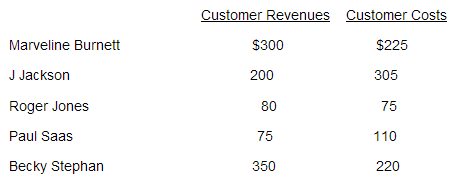
Question 1:Compute the operating income for each of the five customers. (five points)
Question 2:What options should Handy-Man Services consider in light of the customer-profitability results? (five points)
Question 3: What problems might Handy-Man Services encounter in accurately estimating the operating costs of each customer? (five points)
-
John Isaac Inc. Case
$2.00John Isaac Inc., a designer and installer of industrial signs, employs 60 people. The company recorded the type of the most recent visit to a doctor by each employee. A national assessment conducted in 2014 found that 53% of all physician visits were to primary care physicians, 19% to medical specialists, 17% to surgical specialists and 11% to emergency departments. Test at the 0.01 significance level if Isaac employees differ significantly from the survey distribution. Here are their results:
Visit Type Number of Visits Primary care 29 Medical specialist 11 Surgical specialist 16 Emergency 4 e State the decision rule. Use 0.01 significance level. (Round your answer to 3 decimal places.) H0: The employee visits do not differ from the survey distribution.. H1: The employee visits differ from the survey distribution. Reject H0 if 2 >________
Compute the value of chi-square. (Round your answer to 2 decimal places.) 2 = ________
-
Minicase 1: Interest Rates, Bond Yields, and Duration
$5.00You have been hired to analyze the debt securities of your organization. The firm has outstanding loans and bonds. A quick review of the balance sheet shows the following:
Liability
Amount ($)Nominal
Interest
(coupon)
RateYears to
MaturitySelected Liabilities of the firm Simple Loans 800 5% 1 Fixed-Payment Loans 5,000 12% 19 Long-term Bonds #1 500,000 10% 4 Long-term Bonds #2 1,080,000 10% 10 Liabilities Total 1,585,800 Market Price for Bond #1 930.50 Market Price for Bond #2 859.50 Face Value of Each Bond 1,000.00 Selected Current Assets of the firm Marketable Securities: Treasury Bills 100,000 Note: Treasury Bills have a $10,000 face value, which matures in one year. Each Treasury Bill has a cost of $9,580.00
How much interest would the firm pay each year on the simple-interest loan?
How much would you write a cheque for to pay off the loan in one year?
What is the monthly payment needed to pay off the fixed-payment loans?
What is the current yield for each bond if the current price is:
$930.50 for Bond #1?
$859.50 for Bond #2?
What is the expected yield to maturity for each bond?
Bond #1 selling for $930.50?
Bond #2 selling for $859.50
What is the rate of capital gain if both bonds sell for $900.00 in one year?
Bond #1 selling for $930.50 today?
Bond #2 selling for $859.50 today?
If the Yield to Maturity expected by investors changes to 11%:
What will be the market price of Bond #1?
What will be the market price for Bond #2?
What will be the dollar change in price for Bond #1?
What will be the dollar change in price for Bond #2?
What will be the percent change in price for Bond #1?
What will be the percent change in price for Bond #2?
Since the change in expected yield to maturity is the same, why is the amount of change different between the bonds?
If investors holding our 4-year bonds (Bond #1) receive interest income annually for four years, plus the face value of the bonds at maturity,
What will be the total interest earned on the bond over the next four years?
What will be the face value received at maturity?
Given the following projected income stream for Bond #1:
Projected Reinvestment Rates Year Coupon
Interest ($)Face
Value ($)10% 5% 1 100 2 100 10.00 5.00 3 100 21.00 10.25 4 100 1000 33.10 15.76 Total Income 400 1000 64.10 31.01 What is the total cash available over the next four years to the bond holder earning
10%
15%
What is the average annual rate of return for the bond holder earning
10%
15%
Why does the reinvestment rate affect the annual rate of return for the same bond?
If the expected rate of return on our bonds is 10%, what is the duration of Bond #1?
What is the yield to maturity on the Treasury Bills (a discount bond)?
What is the real rate of interest if the nominal rate is 10% and the inflation rate is 3%?

